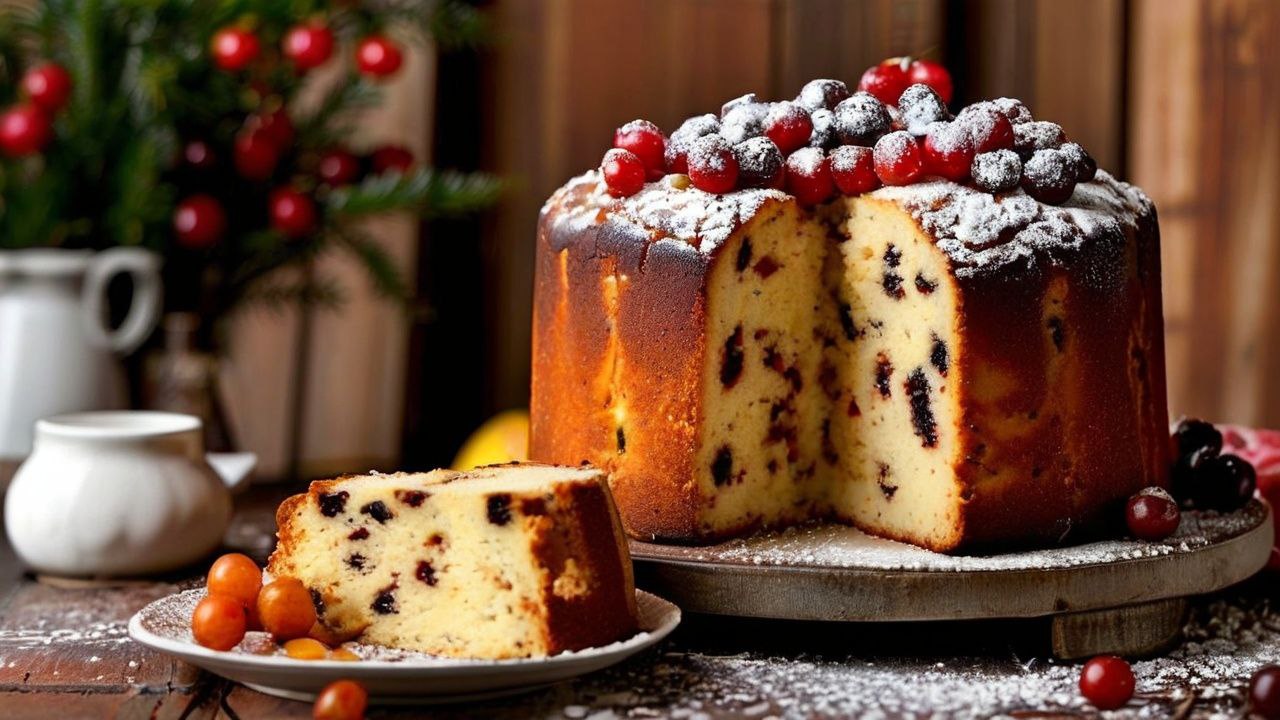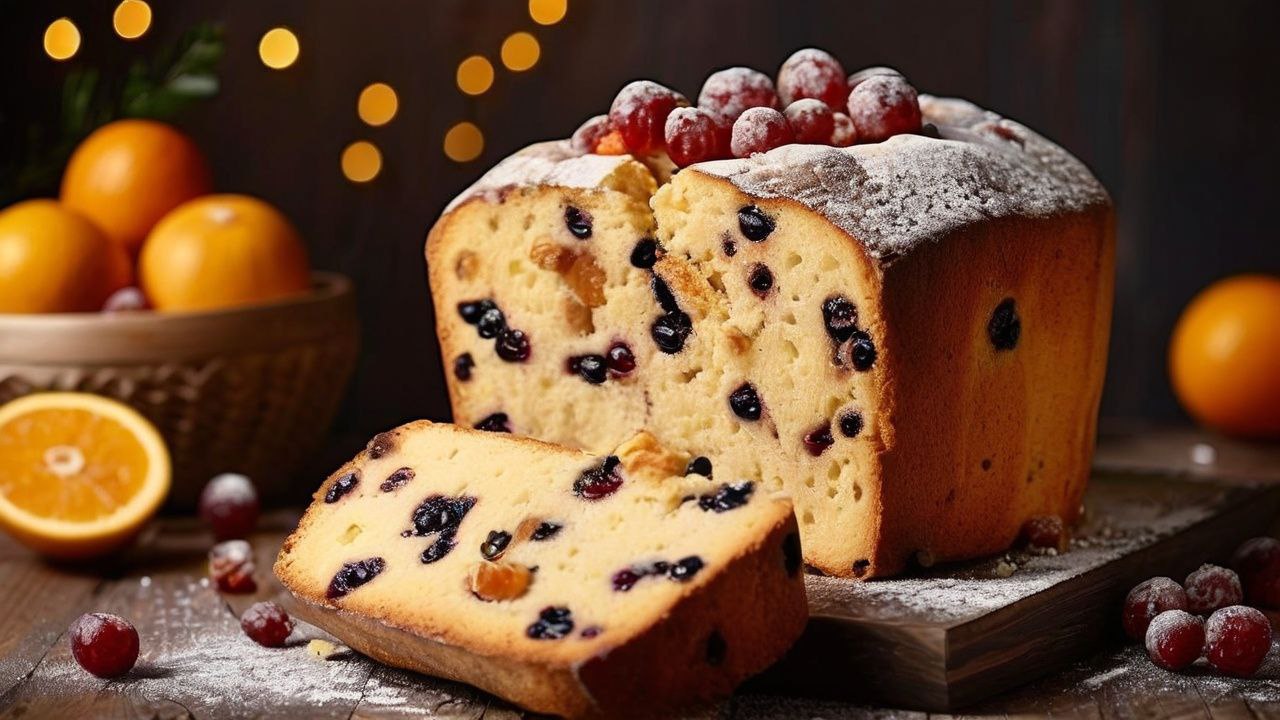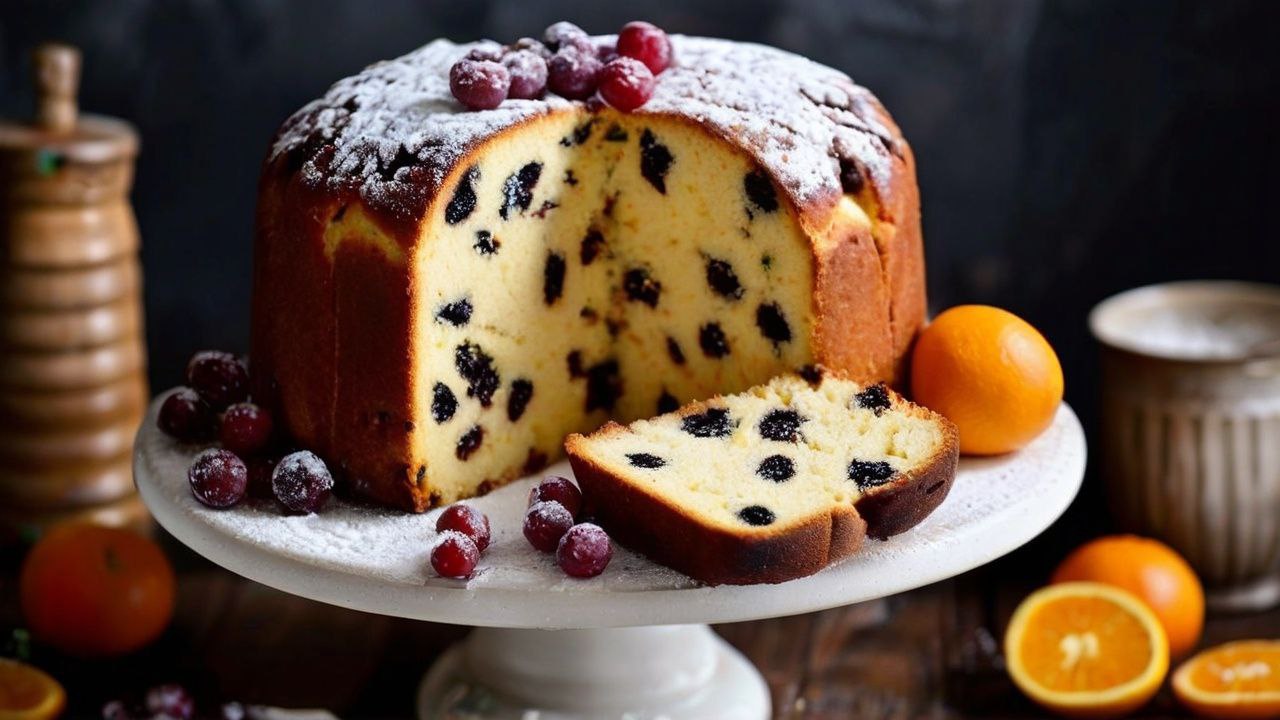- PANETTONE BREAD: THE ULTIMATE ITALIAN HOLIDAY CLASSIC
- WHAT IS PANETTONE BREAD?
- THE HISTORY
- INGREDIENTS FOR TRADITIONAL PANETTONE BREAD
- STEP-BY-STEP PANETTONE BREAD RECIPE
- TIPS FOR THE PERFECT PANETTONE BREAD
- SERVING AND STORING PANETTONE BREAD
- FREQUENTLY ASKED QUESTIONS ABOUT PANETTONE BREAD
- CONCLUSION: THE JOY OF MAKING PANETTONE BREAD
PANETTONE BREAD: THE ULTIMATE ITALIAN HOLIDAY CLASSIC
The panettone bread is a traditional Italian holiday cake that has grown in popularity all over the world. This sweet, fluffy bread is characterized by its dome-shaped, golden-brown top and rich flavor, often filled with dried fruits, raisins, or even chocolate. While panettone bread is widely recognized as a symbol of the holiday season, particularly during Christmas and New Year, it is much more than just a festive dessert. It has a rich history, intricate preparation process, and is a treat to savor with your loved ones during special occasions.
In this guide, you will find everything you need to know to make the best panettone bread from scratch, including a detailed panettone recipe, tips for perfecting the dough, how to shape and bake it, and how to store and serve it for maximum enjoyment.
Whether you’re wondering “where can I find panettone near me” or seeking a delicious homemade alternative to store-bought panettone cake, this recipe will help you create a truly authentic Italian delicacy that is sure to impress your guests.
WHAT IS PANETTONE BREAD?
Panettone bread is a soft, sweet Italian bread made with yeast, butter, eggs, and a variety of fruits such as raisins, candied orange peel, and sometimes even chocolate or nuts. Although it shares similarities with cake due to its sweetness and richness, panettone is technically a bread because it uses yeast as its leavening agent, which gives it a lighter, fluffier texture.
THE HISTORY
The origins of panettone bread can be traced back to ancient Rome, where bakers were known for making sweetened breads using honey, raisins, and nuts. However, the modern version of panettone as we know it today began to take shape in Milan, Italy, during the Renaissance period. According to one legend, a young nobleman fell in love with the daughter of a baker and created the first panettone cake in her honor, later becoming a popular delicacy across Italy.
Panettone evolved over ages into a symbol of luxury and joy, notably during Christmas and New Year’s. Panettone bread is now appreciated in many parts of the world, and during the holiday season, you may find yourself searching for “panettone near me” to taste its delectable flavors and texture. Despite its widespread availability, there is nothing quite like the satisfaction of making your own panettone bread at home.
INGREDIENTS FOR TRADITIONAL PANETTONE BREAD
Creating an authentic panettone bread requires some key ingredients that work together to produce its signature fluffy texture and rich flavor. While you can find panettone in stores, homemade panettone bread is always superior in both taste and texture. Here are the ingredients you’ll need to make this Italian classic:
- 4 cups (500g) all-purpose flour (ideally Italian type 00 flour for authenticity)
- ½ cup (100g) granulated sugar
- ½ cup (120ml) warm milk (approx. 110°F/43°C)
- 3 large eggs + 2 egg yolks
- 1 tablespoon active dry yeast
- 1 teaspoon salt
- 1 tablespoon vanilla extract
- 2 teaspoons grated orange zest
- 1 teaspoon grated lemon zest
- ¾ cup (170g) of room-temperature melted unsalted butter
- ¾ cup (120g) candied orange peel, chopped
- ½ cup (80g) golden raisins
- ½ cup (80g) dark raisins
- Optional: ¼ cup (40g) chopped almonds or hazelnuts
- 1 teaspoon honey (optional, for added flavor and moisture)
For brushing:
- 1 egg, lightly beaten
- 1 tablespoon milk

STEP-BY-STEP PANETTONE BREAD RECIPE
Making panettone bread from scratch can seem like an intimidating process, but with the right preparation and patience, you will be rewarded with a delicious homemade bread that rivals any store-bought version. Follow this detailed guide for each step to ensure your panettone bread turns out perfectly.
STEP 1: PREPARE THE STARTER
A key element of making panettone bread is starting with a pre-ferment (or sponge), which helps develop the bread’s flavor and texture.
- In a small bowl, combine the following ingredients:
- 1/3 cup (80ml) warm milk
- 1 tablespoon sugar
- 1 tablespoon of flour, out of the recipe’s total calls for
- 1 tablespoon active dry yeast
- Stir the mixture until the yeast is dissolved. Let it sit for about 15-20 minutes to allow the yeast to activate. It should become bubbly and foamy.
- Once the starter is ready, move on to the next step.
STEP 2: MIX THE DOUGH
- In a large mixing bowl, combine:
- The remaining flour (about 4 cups)
- Sugar
- Salt
- Grated orange and lemon zest
- Vanilla extract
- Add the activated yeast mixture (the starter) to the flour mixture along with 3 whole eggs and 2 egg yolks.
- Begin mixing the dough together with your hands or a wooden spoon until it starts to come together.
- One tablespoon of the softened butter should be added at a time, letting the dough absorb each addition before moving on to the next.
- Knead the dough for about 15-20 minutes, or until it becomes smooth and elastic. Alternatively, you can use a stand mixer with a dough hook to knead the dough for 10-12 minutes on medium speed.
- Once the dough is ready, place it in a lightly greased bowl and cover it with plastic wrap or a clean kitchen towel. Allow it to rise in a warm place for 2-3 hours or until it has doubled in size.
STEP 3: ADD THE FRUITS AND SHAPE THE DOUGH
- Soak the dark and golden raisins in warm water for around half an hour while the dough is rising. Use paper towels to wipe dry after draining fully.
- Once the dough has risen, gently punch it down to release any air bubbles, then add the soaked raisins and chopped candied orange peel.
- Gently fold the fruit into the dough, making sure to distribute it evenly without tearing it. If desired, you can also add chopped almonds or hazelnuts at this stage.
- Shape the dough into a round ball and place it into a panettone mold (traditionally, a tall paper mold works best). If you don’t have a panettone mold, you can use a tall, round cake pan lined with parchment paper.
- Cover the dough again with a clean kitchen towel or plastic wrap and allow it to rise for another 2-3 hours, or until it has doubled in size and is almost reaching the top of the mold.
STEP 4: BAKE THE PANETTONE BREAD
- Preheat your oven to 350°F (175°C).
- To give the panettone bread a lovely golden sheen, brush the top with a mixture of the milk and softly beaten egg before baking.
- Bake the panettone bread for 40 to 50 minutes, or until it reaches an internal temperature of 190°F (88°C) and the top is golden brown. If the top begins to brown too quickly, you can cover it loosely with aluminum foil during the last 15 minutes of baking.
- Once baked, remove the panettone bread from the oven and allow it to cool for about 5 minutes before removing it from the mold.
STEP 5: COOLING
The most unique step in the process of making panettone bread is the cooling stage. To prevent the bread from collapsing, it is traditionally cooled upside down.
- Use a couple of long wooden sticks or insert two skewers into the panettone bread’s base.
- The panettone bread should be left upside down between two objects, such the backs of two chairs, until it cools completely, which should take at least three to four hours.
This cooling method ensures that the bread retains its airy, fluffy texture and doesn’t deflate once it cools completely.

TIPS FOR THE PERFECT PANETTONE BREAD
Creating the perfect panettone bread requires some practice and patience, but following these tips will help ensure success:
- Use high-quality ingredients: The flavor of panettone is deeply influenced by the ingredients, particularly the butter, eggs, and fruit. Opt for high-quality European-style butter, fresh eggs, and real citrus zest for the best results.
- Allow plenty of rising time: Panettone bread requires a slow and careful rise. Don’t rush the process—allow the dough to rise at its own pace to achieve the perfect texture.
- Use a stand mixer if possible: Kneading the dough by hand can be labor-intensive, especially since the dough is quite rich and sticky. The process will be considerably simpler using a stand mixer. The process will be considerably simpler using a stand mixer.
- Add fruit at the right time: Don’t overmix the dough once you’ve added the dried fruit. To guarantee an even distribution and prevent ripping of the dough, gently fold in the fruit.
SERVING AND STORING PANETTONE BREAD
Panettone bread can be enjoyed in a variety of ways. Serve it sliced for breakfast, toast it for a crisp, buttery treat, or even use it for decadent French toast or bread pudding.
To store:
- Wrap gently with plastic wrap and store at room temperature for up to 5 days.
- If you want to store it for a longer period, freeze slices individually and toast them when ready to enjoy.
FREQUENTLY ASKED QUESTIONS ABOUT PANETTONE BREAD
HOW LONG DOES PANETTONE BREAD KEEP?
Panettone bread will keep for about 3-5 days at room temperature, wrapped tightly in plastic wrap. Also, slices can be kept in the freezer for up to a month.
CAN I MAKE PANETTONE BREAD WITHOUT A MOLD?
Yes! If you don’t have a panettone mold, you can use a tall cake pan or even create your own mold by using parchment paper and folding it into a cylinder.
CONCLUSION: THE JOY OF MAKING PANETTONE BREAD
Making panettone bread at home is an incredibly rewarding experience that allows you to embrace Italian tradition while also impressing your family and friends with a delicious homemade treat. Whether you’re enjoying it for breakfast, gifting it during the holiday season, or savoring it with a cup of coffee, panettone bread is sure to become a beloved part of your culinary repertoire.


